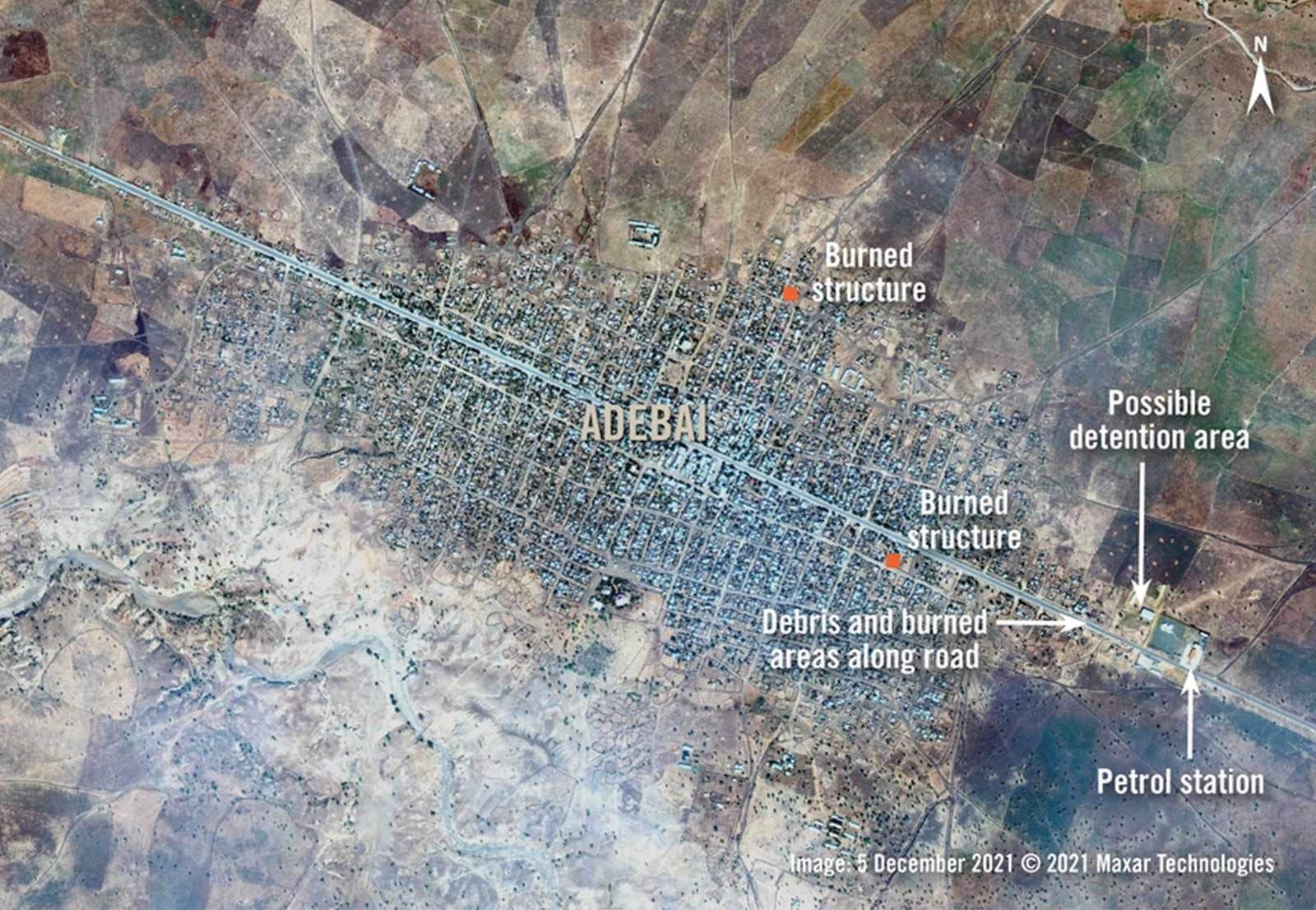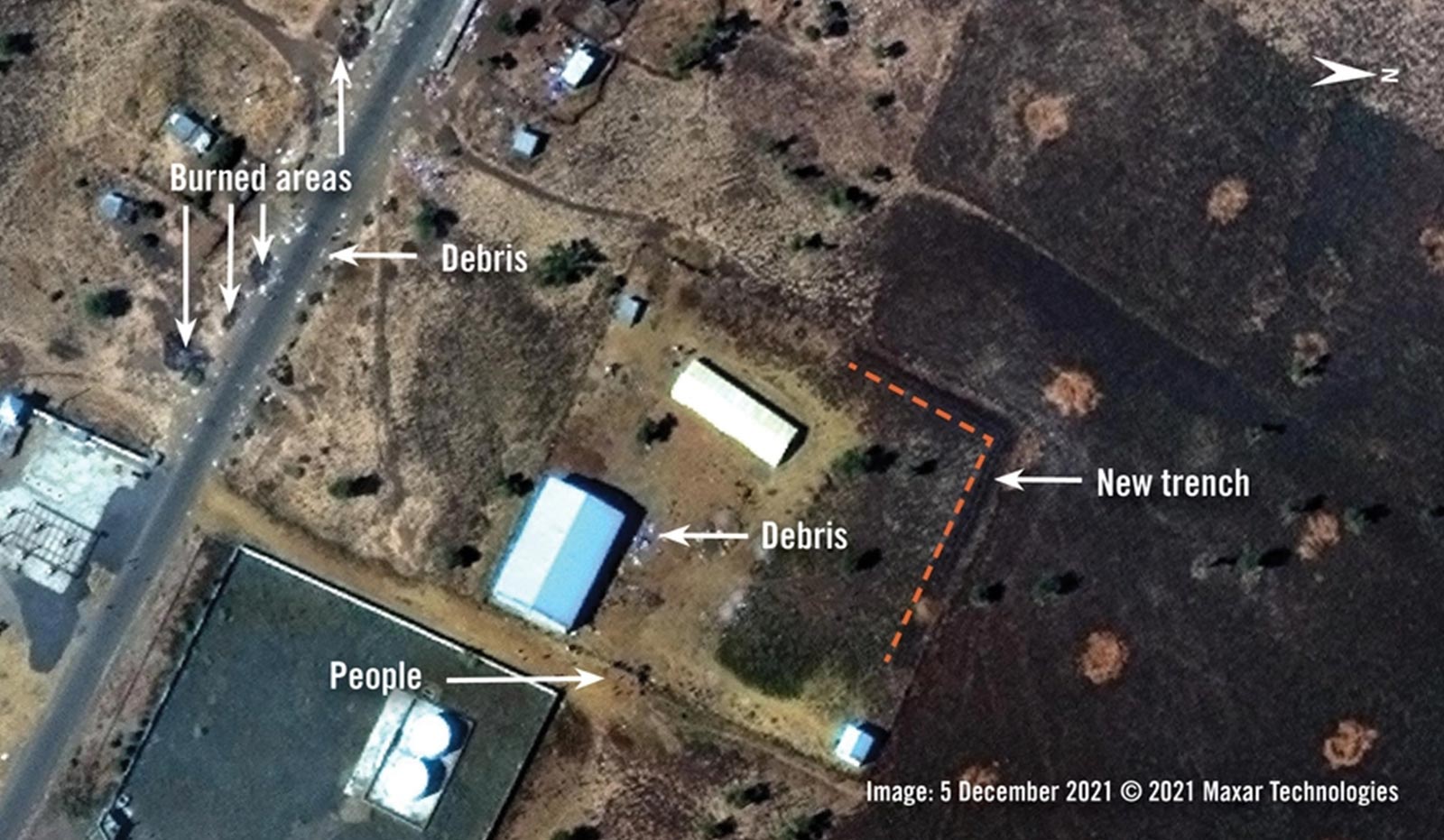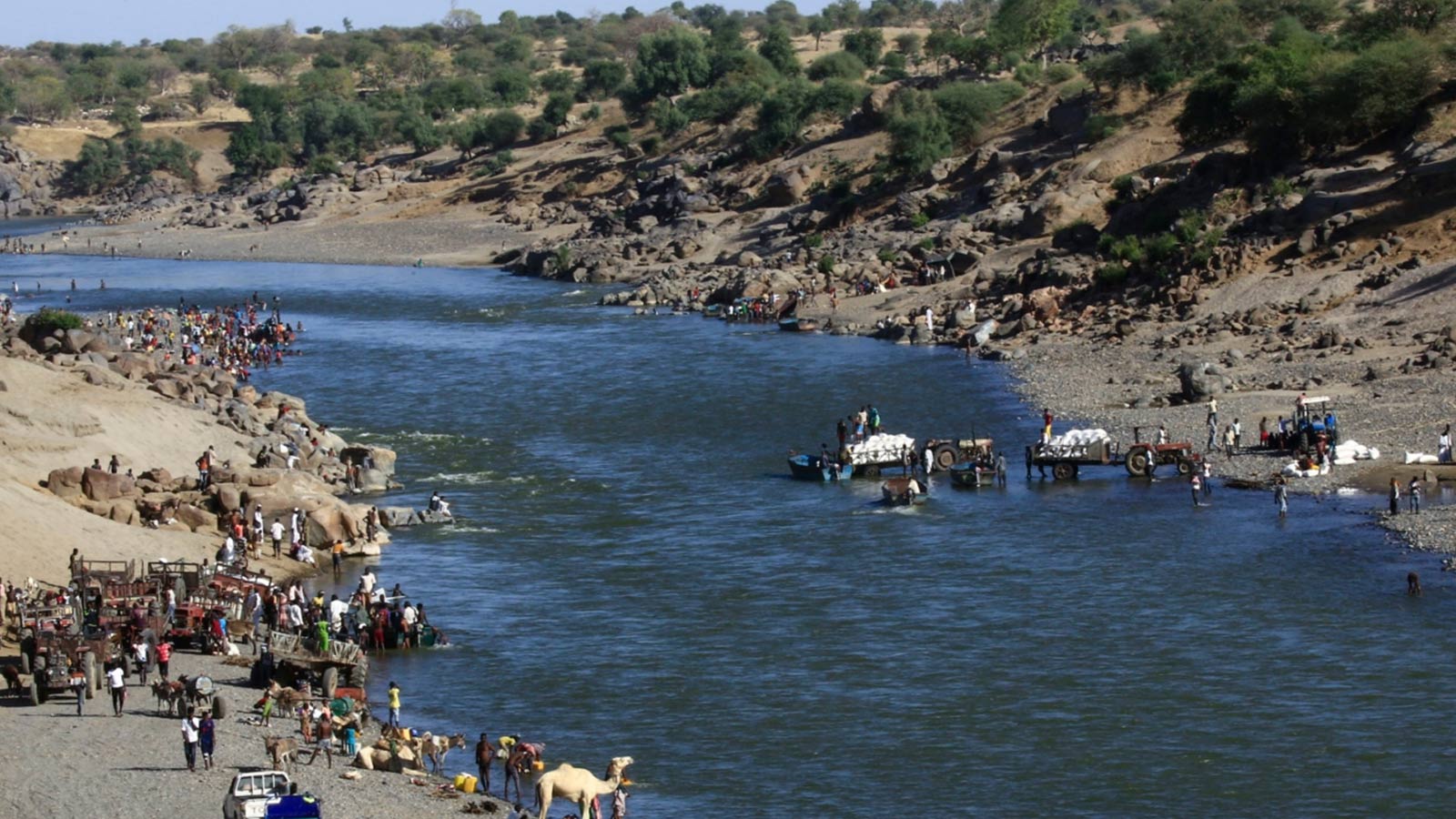International investigations, access to detainees key to deter further abuses.
Amhara security forces are responsible for a surge of mass detentions, killings and forced expulsions of ethnic Tigrayans in the Western Tigray territory of northern Ethiopia, Amnesty International and Human Rights Watch said today.
Tigrayan civilians attempting to escape the new wave of violence have been attacked and killed. Scores in detention face life-threatening conditions including torture, starvation, and denial of medical care.
The new onslaught of abuses by Amhara forces against Tigrayan civilians remaining in several towns in Western Tigray should ring alarm bells. — Joanne Mariner, Amnesty International’s Director of Crisis Response
“The new onslaught of abuses by Amhara forces against Tigrayan civilians remaining in several towns in Western Tigray should ring alarm bells,” said Joanne Mariner, Amnesty International’s Director of Crisis Response.
“Without urgent international action to prevent further atrocities, Tigrayans, particularly those in detention, are at grave risk.”
Since armed conflict began in November 2020, Western Tigray, a disputed administrative territory, has been the site of some of the worst atrocities, including massacres, indiscriminate shelling, and large-scale forced displacement of the Tigrayan population.
On 2 December, 2021, the United Nations Office for the Coordination of Humanitarian Affairs (OCHA) reported that 1.2 million people have been displaced from Western Tigray since the beginning of the conflict. A 9 December OCHA report found that between 25 November and 1 December, over 10,000 Tigrayans were newly displaced from Western Tigray. It also stated that Western Tigray remained inaccessible to aid agencies due to security concerns.
In November and December, Amnesty International and Human Rights Watch conducted phone interviews with 31 people, including 25 witnesses and survivors as well as relatives of those detained and expelled, about abuses by Amhara militias and regional security forces against Tigrayan civilians in the towns of Adebai, Humera, and Rawyan.
Since early November, Amhara regional police forces and militias, including militia groups known as Fanos, have systematically rounded up Tigrayans in Adebai, Humera, and Rawyan. These forces separated families, arrested teenagers age 15 and older and men and women civilians. They have forcibly expelled women and younger children, as well as sick and older people from the area. Some of those expelled have since arrived in Central Tigray, while others remain unaccounted for.
“Tigrayans, regardless of [their] sex and age, were taken to a school,” said one man in Rawyan who witnessed the house-to-house roundups of Tigrayans by Fano militia. “They separated the old from the young, took their money and other possessions. … Older people, parents were loaded on big trucks [going] east. They let them go with nothing, while the young remained behind.”
Following roundups in Humera on 20 and 21 November, two witnesses described seeing as many as 20 trucks full of people leaving on those days toward Central Tigray.
They started shooting whoever was in range running. When the people tried to escape… [the Fano] attacked them with machetes and axes so no one could escape…We were passing bodies and we were all in shock… After we calmed down, we noticed that there were more bodies there too. Everywhere you turned, there would be five, 10 bodies. — A 34-year-old farmer from Adebai.
Six witnesses said Amhara forces shot at Tigrayans seeking to flee the roundups in Adebai and attacked them with sticks and sharp objects. An unknown number were killed. “They started shooting whoever was in range running,” said a 34-year-old farmer from Adebai, who ran to nearby fields from Fano militias attacking him and others. “When the people tried to escape… [the Fano] attacked them with machetes and axes so no one could escape…We were passing bodies and we were all in shock… After we calmed down, we noticed that there were more bodies there too. Everywhere you turned, there would be five, 10 bodies.” Four witnesses said armed elements also shot at Tigrayans crossing into Sudan.
Satellite imagery captured between 19 November and 5 December shows significant activity in Adebai, including moving vehicles, groups of people around a makeshift detention site, large amounts of debris on the main road, and burned structures. Imagery taken on 5 December in Humera shows 16 open-back trucks near the town’s central roundabout.

Satellite image collected of the town of Adebai, in northern Ethiopia’s Western Tigray administrative zone, showing overview of locations of damage and a possible detention site. Analysis by Amnesty International, Image by Maxar Technologies

Analysis of satellite image collected on 5 December 2021 of the eastern outskirts of Adebai town. People and debris are visible around a large warehouse, near the Enda Roto petrol station. Burned areas and debris are visible by the main road. Analysis by Amnesty International, Image by Maxar Technologies
Three former detainees held in Humera prison, some of whom had been held for as long as five months before they escaped in November, said that Amhara authorities kept them in extremely overcrowded cells for extended periods. Guards denied them food and medical treatment and tortured and beat detainees whose hands and feet had been tied with sticks and rifles. One former detainee arrested on 19 July escaped around 13 November while loading corpses of fellow detainees onto a tractor. He said he knew of 30 people who died while he was held there, including seven of the 200 men in his cell: ““All of us have gone through it [the beatings] but the most vulnerable ones were the [older men],” he said. “They couldn’t handle the torture, that’s why they were dying.” He said that the Fano militia members beating them threatened all Tigrayans with death.
The roundups, abusive detentions, and forced expulsions separated families and left communities from the three towns desperate for news about the safety and whereabouts of their loved ones, many of whom were put on trucks and remain unaccounted for. One man who fled Adebai in late November said: “My wife and my mother called me four days ago, told me they had put them in vehicles, and they don’t know where they are taking them. After that I have never heard from them.”
The Ethiopian authorities should immediately cease attacks on civilians, secure the release of those arbitrarily detained, and urgently provide unimpeded access to Western Tigray for aid agencies and organizations with a mandate to visit detention sites, Amnesty International and Human Rights Watch said.
Given the gravity of the ongoing abuses, the UN Human Rights Council should urgently establish an independent international mechanism to investigate abuses in the Tigray conflict, including serious violations of international humanitarian law (the laws of war), identify those responsible at all levels, and preserve evidence for future accountability.
Forced displacement and deliberate attacks on the civilian population violate the laws of war. Everyone in custody has the right to be treated humanely and with respect for their inherent dignity, including having access to adequate food and medical care. Ordering civilians displaced for reasons not required for their security or imperative military necessity, attacking civilians who are not directly participating in hostilities, and torturing or otherwise mistreating detainees, are war crimes.
“The global paralysis on Ethiopia’s armed conflict has emboldened human rights abusers to act with impunity and left communities at risk feeling abandoned,” said Laetitia Bader, Horn of Africa director at Human Rights Watch.
“As evidence of atrocities mounts, world leaders should support the creation of an international investigative mechanism and the UN Security Council should put Ethiopia on its formal agenda.”
As evidence of atrocities mounts, world leaders should support the creation of an international investigative mechanism and the UN Security Council should put Ethiopia on its formal agenda. — Laetitia Bader, Horn of Africa director at Human Rights Watch
ADDITIONAL BACKGROUND AND ACCOUNTS
Roundups, Killings, and Mistreatment in Custody
In the early morning hours of 3 November, as Adebai residents headed to Abune Teklai church in town to pray, local security forces at the church ordered the men to congregate for a meeting while telling the women to leave, four residents said. “I was… metres away from the church when I met a group of three Tigrayan women that told me I better go home because Fanos were collecting Tigrayan men and had ordered the women to leave,” a 20-year-old student said.
As word of the roundup spread, six Tigrayan men interviewed were among the many who ran in panic, some home or to neighbouring fields to evade arrest. Four witnesses said Amhara militia members shot or attacked those trying to flee with machetes, axes, knives, or sticks. A 26-year-old man fleeing to the fields saw armed men on motorbikes shooting at people including his 70-year-old uncle. He later saw his uncle’s body, and those of two other men, including an older man he knew. “They were shooting at anyone who was behind,” he said. “[My uncle] wasn’t even running…they still shot him. I saw the guy shooting at him and him falling.”
Four witnesses said the Fano militia proceeded to go house-to-house searching for Tigrayans. A farmer hiding at home watched as a group of 30 to 40 armed men attacked his neighbour, a mechanic in his mid-twenties: “They told him to come… He had his hands up and they hit him on his shoulder with an axe. As he screamed, they dragged him and took him with them.”
Amhara forces took those captured to detention sites: some to the town’s police station, others to a former sorghum mill used as a makeshift detention site near the Enda Roto petrol station, on the town’s eastern outskirts.
In the following days, the men who had escaped survived by hiding on farmland, but continued to come under attack, three residents said. The 20-year-old student heard gunshots on 7 November and later saw bodies near a reservoir three kilometres northeast of Adebai:
“The Fanos and [armed individuals] just came… and started killing whomever they found in the bushes. … We were further [away]… but we were hearing a lot of gunshots. So when it got quiet and it was dark, we went to the [reservoir] and saw a lot of bodies. We didn’t count because we were afraid and shocked… I would say [I saw] about 20 [bodies].”
Bodies remained unburied, so that “the whole town smelled and was filled with dead bodies,” said one man. Four other residents said they saw dead bodies on the outskirts of town.
Roundups, beatings, and detentions of Tigrayan civilians also occurred in the towns of Humera and Rawyan. A 37-year-old farmer from Humera said he witnessed roundups and the killing of an older man with a physical disability nicknamed “Lingo” on 5 November. On his way home the farmer saw militias telling Lingo “to stand up and, when he couldn’t, they started beating him… with machetes, axes, and stones.” Two days later, the farmer learned that Lingo was beaten so badly that he died.
Four people who made it to Sudan said that armed forces on the Ethiopian border shot at them as they tried to cross. A 14-year-old boy who crossed on November 23 said that as his group arrived in Dima, the last Ethiopian village before the border, forces in military clothing “started shooting and telling us to stop, and when we kept running, they captured one of us and killed another one.” He said a third person was missing following the incident.
Roundups, Expulsions of Older People, Women, and Children.
During the roundups in Adebai, Humera, and Rawyan, Amhara forces separated and eventually expelled younger children, women, and older and vulnerable Tigrayans towards Central Tigray.
In Humera, two witnesses and three family members who spoke to people there at the time said that Amhara forces put people in about 20 trucks that left town on 20 November. The expulsions continued the following day, including of children and young mothers, said one witness. A similar number of vehicles left that second day, said one resident.
The roundups of Tigrayans similarly began in Rawyan on 20 November. Four witnesses and two family members said that Amhara militias and Fanos in coordination with the town’s administrators rounded up Tigrayans. They went house to house and “collected all Tigrayans at the school,” said one driver, who was among those held. He noted that town administrators issued instructions to militias:
“Militia were beating the youth, 17 and 18-year-olds, searching for money, and collecting their possessions. The [administrators] gave instructions, who can be released, and who can stay…. “Catch this one! Release this one!” They loaded the older people, parents… onto the open trucks, Isuzu trucks… and took them away from Rawyan.”
One boy said that the militias registered him and other youth and released them. Men and older teenagers remained detained in the village ward offices and flour mill.
In Adebai, militias loaded some of the Tigrayan men they arrested on 3 November onto Isuzu and other pickup trucks and took them away, four residents said. The roundups continued in the weeks that followed, when women and older people were also arrested and taken away.
Family members of those expelled soon lost touch with loved ones. A student said he last received a phone call from his sister on 28 or 29 November as armed forces were putting her and their mother on a truck in Adebai and taken away:
“She told me that they were being forced to leave everything behind, that they didn’t even let them grab their clothes or any belongings… that they [the forces] started looting the house while they were there, [and] that they didn’t even have food or water to drink… She… told me that there were 13 vehicles [and] that they had already boarded six vehicles.”
A farmer described the last phone call he had with his two daughters and niece on 23 November: “When the Fanos were taking them, they took everything they carried in their hands, the jewelry, the clothes that they had, even the kids’ clothes and the biscuits that they had for them. And for two days… they were burning clothes.”
Satellite imagery collected between 19 November and 5 December confirmed that there were open-back vehicles along the main road that crosses Adebai and burned spots and large amounts of debris along the road.
Mistreatment in Mass Detention Sites
Thousands of Tigrayan detainees are estimated to be held in overcrowded detention sites in Western Tigray. Three former detainees held in Bet Hintset prison in Humera, one of several detention sites in the town, described appalling conditions with frequent beatings, torture, insults, and the denial of food and medicine by Amhara regional special police. A daily labourer arrested in July and held in Bet Hintset prison, also controlled by Amhara regional police, until his escape in mid-November described being kept in a 3-by-4-metre room with up to 200 people:
“Forget showers, we couldn’t use toilets. They didn’t give us food or water, even [at times] when our family brought us food, they wouldn’t let us… a lot of people were falling ill… dying… I’m talking daily, daily… I’m very sure of 30 bodies… only from our room, seven people died, all of them were above the age of 70.”
He described a regular schedule of severe beatings, in which Fanos would torture groups of detainees by beating their hands, heads, chests, and genitals using sticks or the butt or the muzzle of a rifle. Another detainee, also arrested in mid-July and held at Bet Hintset, said: “They used electric wires and for the ages from 12 to 30, they hit us on the soles of our feet… the others that are older, they lay them down on their stomachs and hit them from their necks to their feet.”
With the expulsion of some relatives in November on whom detainees had relied for food, survivors and relatives were concerned about those still detained. One 55-year-old man said, “I’m so worried about what they are eating in the prisons, because I know they won’t give them food and all the family members that they had who used to bring them food were taken. I’m sure a lot of people are dying.” Another resident said: “I fear those detained will all be killed.”
Source: Amnesty International














